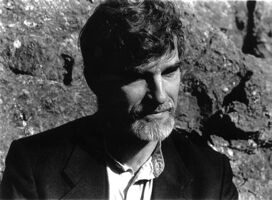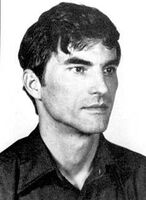Difference between revisions of "Cleary, T."
| (3 intermediate revisions by 2 users not shown) | |||
| Line 3: | Line 3: | ||
|HasLibPage=Yes | |HasLibPage=Yes | ||
|HasBnwPage=Yes | |HasBnwPage=Yes | ||
| − | | | + | |MainNamePhon=Thomas Cleary |
| + | |SortName=Cleary, Thomas | ||
|namefirst=Thomas | |namefirst=Thomas | ||
|namelast=Cleary | |namelast=Cleary | ||
| − | |bio=Cleary | + | |bio=Thomas Cleary passed away on June 20, 2021. https://www.shambhala.com/remembering-thomas-cleary |
| + | :Of his passing, renowned Buddhist scholar Robert Thurman wrote on Facebook: | ||
| + | ::“There is no doubt in my mind that Thomas Cleary is the greatest translator of Buddhist texts from Chinese or Japanese into English of our generation, and that he will be so known by grateful Buddhist practitioners and scholars in future centuries. Single-handedly he has gone a long way toward building the beginnings of a Buddhist canon in English.” | ||
| − | Cleary | + | Cleary became interested in Buddhism when he was a teenager; his researches into Buddhist thought began with a desire to learn during this time of his life. When he began translating, he chose either untranslated works or—as in the case of Sun Tzu's ''The Art of War''—books whose extant translations were "too limited". |
| − | Cleary | + | Cleary earned a Ph.D in East Asian Languages and Civilizations from Harvard University and a JD from the Boalt Hall School of Law at the University of California, Berkeley. Since completing his doctoral studies, Cleary has had little involvement with the academic world. In a rare interview, Cleary stated: "There is too much oppression in a university setting . . . I want to stay independent and reach those who want to learn directly through my books." |
| − | + | Cleary's brother Jonathon also completed his doctoral work in EALC at Harvard. The two brothers worked together to translate the koan collection ''The Blue Cliff Record''; Shambhala published the translation in 1977. | |
| − | He also translated the monumental Avatamsaka Sutra (also called Huayan Jing, or the Flower Ornament Scripture). | + | Thomas Cleary's most widely disseminated translation has been of Sun Tzu's ''The Art of War'' (''Sunzi Bingfa''). |
| + | |||
| + | He also translated the monumental ''Avatamsaka Sutra'' (also called ''Huayan Jing'', or the ''Flower Ornament Scripture''). | ||
Another major translation was of the commentaries of the 18th century Taoist sage Liu Yiming, who explains the metaphoric coding of the main Taoist texts dealing with the transformation of consciousness, and the fusion of the human mind with the mind of Tao. | Another major translation was of the commentaries of the 18th century Taoist sage Liu Yiming, who explains the metaphoric coding of the main Taoist texts dealing with the transformation of consciousness, and the fusion of the human mind with the mind of Tao. | ||
| − | In 2000, Cleary's various translations of Taoist texts were collected into four volumes by Shambhala Publications as The Taoist Classics. Following the success of these publications, a five-volume collection of Buddhist translations was collected as Classics of Buddhism and Zen. Another translation from the Muslim wisdom tradition is Living and Dying with Grace. In 1993 Cleary published a translation of Miyamoto Musashi's Book of Five Rings. ( | + | In 2000, Cleary's various translations of Taoist texts were collected into four volumes by Shambhala Publications as ''The Taoist Classics''. Following the success of these publications, a five-volume collection of Buddhist translations was collected as ''Classics of Buddhism and Zen''. Another translation from the Muslim wisdom tradition is ''Living and Dying with Grace''. In 1993 Cleary published a translation of Miyamoto Musashi's ''Book of Five Rings''. ([https://en.wikipedia.org/wiki/Thomas_Cleary Source Accessed Sept 18, 2020]) |
| + | |images=File:Thomas-Cleary-ShambhalaPubsOfficial.jpg | ||
| + | File:Cleary, T.jpg | ||
| + | |yearbirth=1949 | ||
| + | |yeardeath=2021 | ||
| + | |phduniversity=Harvard University | ||
| + | |BuNayDefProvComplex=No | ||
| + | |BuNayWheelTurnComplex=No | ||
| + | |BuNayYogaMadhyaComplex=No | ||
| + | |BuNayZhenRangComplex=No | ||
| + | |BuNayVehiclesComplex=No | ||
| + | |BuNayAnalyticMeditComplex=No | ||
| + | |BuNayEmptyLuminComplex=No | ||
|IsInGyatsa=No | |IsInGyatsa=No | ||
|classification=People | |classification=People | ||
}} | }} | ||
| − | |||
| − | |||
| − | |||
| − | |||
| − | |||
| − | |||
| − | |||
| − | |||
{{Footer}} | {{Footer}} | ||
Latest revision as of 16:31, 28 June 2021
| English Phonetics | Thomas Cleary |
|---|---|
| Sort Name | Cleary, Thomas |
| Birth: | 1949 |
|---|---|
| Death: | 2021 |
Tibetan calendar dates
PhD University
- Harvard University
Biographical Information
Thomas Cleary passed away on June 20, 2021. https://www.shambhala.com/remembering-thomas-cleary
- Of his passing, renowned Buddhist scholar Robert Thurman wrote on Facebook:
- “There is no doubt in my mind that Thomas Cleary is the greatest translator of Buddhist texts from Chinese or Japanese into English of our generation, and that he will be so known by grateful Buddhist practitioners and scholars in future centuries. Single-handedly he has gone a long way toward building the beginnings of a Buddhist canon in English.”
Cleary became interested in Buddhism when he was a teenager; his researches into Buddhist thought began with a desire to learn during this time of his life. When he began translating, he chose either untranslated works or—as in the case of Sun Tzu's The Art of War—books whose extant translations were "too limited".
Cleary earned a Ph.D in East Asian Languages and Civilizations from Harvard University and a JD from the Boalt Hall School of Law at the University of California, Berkeley. Since completing his doctoral studies, Cleary has had little involvement with the academic world. In a rare interview, Cleary stated: "There is too much oppression in a university setting . . . I want to stay independent and reach those who want to learn directly through my books."
Cleary's brother Jonathon also completed his doctoral work in EALC at Harvard. The two brothers worked together to translate the koan collection The Blue Cliff Record; Shambhala published the translation in 1977.
Thomas Cleary's most widely disseminated translation has been of Sun Tzu's The Art of War (Sunzi Bingfa).
He also translated the monumental Avatamsaka Sutra (also called Huayan Jing, or the Flower Ornament Scripture).
Another major translation was of the commentaries of the 18th century Taoist sage Liu Yiming, who explains the metaphoric coding of the main Taoist texts dealing with the transformation of consciousness, and the fusion of the human mind with the mind of Tao.
In 2000, Cleary's various translations of Taoist texts were collected into four volumes by Shambhala Publications as The Taoist Classics. Following the success of these publications, a five-volume collection of Buddhist translations was collected as Classics of Buddhism and Zen. Another translation from the Muslim wisdom tradition is Living and Dying with Grace. In 1993 Cleary published a translation of Miyamoto Musashi's Book of Five Rings. (Source Accessed Sept 18, 2020)
- Wiki Pages
- Person description or short bio
Expand to see this person's philosophical positions on Buddha-nature.
| Is Buddha-nature considered definitive or provisional? | |
|---|---|
| Position: | |
| Notes: | |
| All beings have Buddha-nature | |
| Position: | |
| If "Qualified", explain: | |
| Notes: | |
| Which Wheel Turning | |
| Position: | |
| Notes: | |
| Yogācāra vs Madhyamaka | |
| Position: | |
| Notes: | |
| Zhentong vs Rangtong | |
| Position: | |
| Notes: | |
| Promotes how many vehicles? | |
| Position: | |
| Notes: | |
| Analytic vs Meditative Tradition | |
| Position: | |
| Notes: | |
| What is Buddha-nature? | |
| Position: | |
| Notes: | |
| Svātantrika (རང་རྒྱུད་) vs Prāsaṅgika (ཐལ་འགྱུར་པ་) | |
| Position: | |
| Notes: | |
| Causal nature of the vajrapāda | |
| Position: | |

